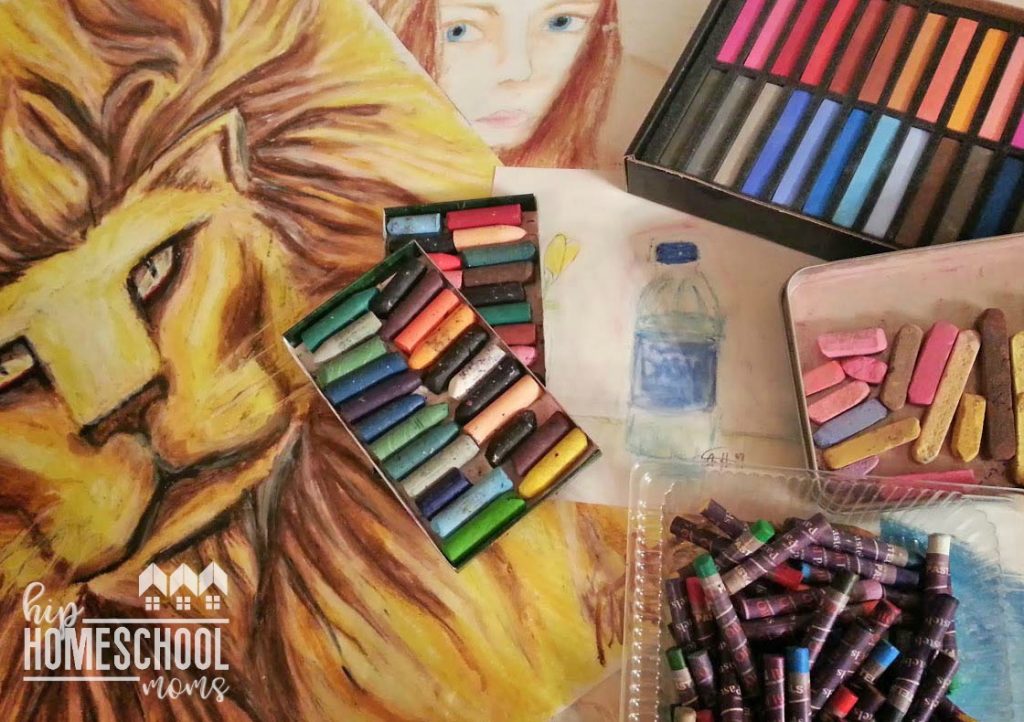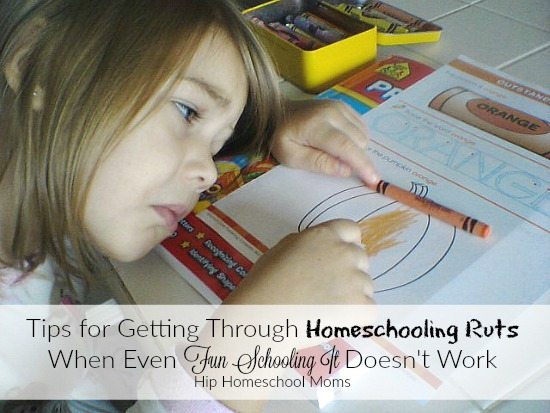25 Tips for Managing Homeschool Art Supplies
Something many of us enjoy learning about is organization. We homeschoolers tend to attract books, office supplies, art supplies, math manipulatives, and the list goes on! Today we’re sharing 25 tips for managing homeschool art supplies. If you can find great ways to organize your art supplies and keep them handy, you’ll be much more likely to actually get them out and use them with your children during the school year!
Many children love including art with other subjects. It makes all subjects more fun, and it also helps many students remember more of what they’ve learned by allowing them to experience ideas and concepts they’re learning about in meaningful ways. So if your art supplies are out of control or if you need to buy art supplies and would like to start out organized, we think these tips are just what you need!

Managing Art Supplies in a Homeschool Setting
Managing homeschool art supplies can be a real challenge, and it may not come naturally to us all. On one had we want to have several resources available to our children to give them a rich and full education- to include art. However, most of us in the home setting do not have the required space for an art studio or even a classroom. Therefore, we have to manage materials in the context of a typical home setting. It can be quite a challenge! I hope this list will help you think outside the classroom box so that you can keep a variety of art materials on hand while still keeping them in a practical way that works for you and the space you have available.
25 Tips for Managing Homeschool Art Supplies
- Keep like things together.
- Store items in square and rectangular boxes. It’s more efficient than round containers.
- Label storage containers so you’ll know what’s in them without pulling them out. You might also like to use clear containers.
- Store items near where you do your work. Consider where you will be using materials, and keep them in that handy location. If you use clay in the kitchen but crayons in the homeschool room or living room, store them separately in the room where each one will be used.
- Clean materials after every use. I know this is basic, but it’s important and can’t be overstated.
- Keep wet wipes handy where you need them.
- Work on art projects near a sink or other water source for easy clean up.
- Cover tables with newspaper or rolls of paper or plastic for messier projects. Discard in trash when finished. Use paper towels.
- Use canvas drop cloths when using clay or painting. Throw in washing machine after use.
- Store loose works of art in portfolios or student art boxes and store them in built-ins or bookshelves.
- Wear smocks and aprons to protect clothing. Kids love this.
- Use a pencil sharpener as often as needed. I mean a good one. Good art pencils and charcoals deserve good and lasting care.
- Throw out dried out, used up, and broken art supplies monthly. I’m talking about brushes, markers, and things that can no longer be used -period. If your supplies are good your children will be more inspired.
- Buy one new art material each quarter to replace old things used up or ruined. Introduce new mediums and children progress.
- Wash paint and craft brushes in warm soapy water immediately after use. You really shouldn’t soak them. Dry by blotting with wet cloth. Reshape the brush to a point. Allow to dry completely before storing again.
- Be sure lids get back on glue, markers and paint and are completely closed and sealed after each use so they don’t dry out. Have older children help out here.
- Have a box for paper scraps that be used for future projects. Again, label so you’ll know where to find it when you need it. Card boxes and craft paper boxes work terrific.
- A paper cutter is a valuable tool for anyone doing multiple art projects. Keep it out of reach of unsupervised children and lock it after every use!

- Once the boxes they come in wear out, you can use craft organizers with dividers for storing and using your drawing pencils, charcoals, pastels, or pens or whatever medium you use most. Tins also work well. Pencils and charcoals fill my boxes because I use them the most.
- Art books:. Determine a place solely for keeping good art books. These are wonderful for children to explore on their own.
- Store paper, foam, felt, and other rectangular items in rectangular boxes. This is at first an investment but is so worth it. They store so much better, stay organized, and are not falling out loose everywhere. Large boot boxes work too.
- Use sketchbooks or journals. Keep them in the same accessible spot so your child can access them. Then work on teaching your children to date and sign their work in the sketchbook. I had to really stress this with my kids because they wanted to tear pages out. I finally got them to leave them in the sketchbook even it they were not completely happy with them. This serves two purposes- as a record so they can see their progress as they develop skills and also as a beautiful keepsake for you.
- Store pencils and felt tip permanent pens in small cases or boxes. I prefer boxes to zipper bags because I think pencils break less.
- Don’t spend money on paint cups and palettes. Wash and reuse yogurt cups, styrofoam trays ( fruit and veggie packaged only), paper plates, etc. These save money, store easily, and can be thrown away after use. This saves tons of time with clean up. You can feel better about throwing them away because you are already recycling these items by using them twice.
- Save “bits and pieces” for crafty ideas and multimedia projects. Washed out clear pickle and condiment jars are excellent for buttons, foam stickers, pompoms, and more!
Should I keep broken pastels, charcoal, colored pencils etc.?
Yes! Well-loved art supplies will look used, and that’s ok. I like to think of my charcoals and drawing pencils like I would think of an old pair of jeans. They’re a bit tattered, but they are comfortable, and I’ve had success with them. I always put them back after use so that the next time my child and I feel inspired, they are there and ready to use.
I do not keep broken crayons. They are hard to hold onto, and they’re pretty inexpensive to replace. However, I don’t actually throw them away either. Instead, I use them for wax craft projects.
If you and your students love art, you’ll enjoy these articles too!
Learn more about How I Organize My Art Supplies
Must Have Art Supplies for the Artistic Homeschool









Great ideas! Our art stuff is an unorganized mess locked up where the toddler can’t get it. Will try some of these tips!
Great ideas! I can’t wait to reorganize our homeschool room!